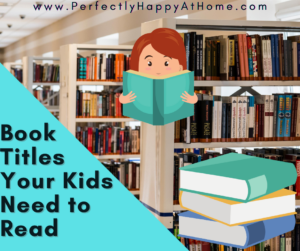 Reading curriculum. Books.
Reading curriculum. Books.
Novels. Classics. New authors. Historical Fiction. Shakespeare. Sci-Fi.
Does Captain Underpants count? What about Diary of a Wimpy Kid? Do we have to read Grapes of Wrath?? HELPPPP!!!!!
If looking at this list ties your stomach in knots or brings you worry, help is on the way. Feel overwhelmed or under-prepared? No problem…let’s talk through this. We will go by grade range to make it super easy and painless…take a nice deep breath and a sip of coffee…here we go!
Are you familiar with Charlotte Mason? If you’re not, I highly suggest reading up on her methodologies on homeschooling. They are so freedom-giving!! Schooling your own kids can seem scary at times (especially when it comes to reading!), as I’ve talked about before, but it doesn’t have to be! Learning to read is one thing. It is a very methodical and sometimes slow process. Others pick it up quickly. For today’s topic, let’s assume your child can already read proficiently enough to enjoy his or her book by reading alone.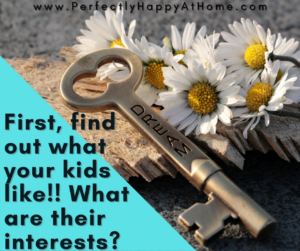
First of all, let’s find out what your kids like. If they’re young, just ask them what types of things are fun to read about. Many kids will tell you they’d like to read about a certain animal, a sports figure, or maybe an activity. Older kids might have ideas like a TV or internet personality, an animal (always a popular topic with all ages!), a country, type of music, or maybe even a historical figure. Whatever your child says, try to accommodate, or give a equivalent substitution, for this first time around. The point is to help them learn that reading can be fun and exciting. This is an important task. Because of this, I keep reading as a subject ungraded for a long time. Don’t get me wrong, I check daily to make sure proficiency, understanding, and processing of information are happening. However, much like with writing, when children feel judged right out of the gate on a subject they are working hard to master, they can feel defeated and discouraged. Since this is the opposite of what we are going for, herein lies my reasoning for not grading reading assignments right away. Around 4th grade, I begin asking for short written paragraphs with specific instructions so they can get used to rewording information they have read. They begin keeping a reading journal at this time, too, where they journal after reading each chapter. Again, this journal isn’t graded, but checked for completion.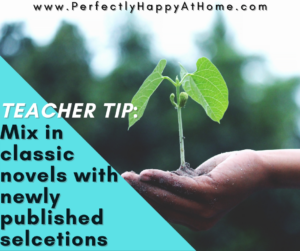
Back to reading. I have found that it is great to mix in classic novels with newer selections. This is one way that kids can get a well-rounded introduction to writing styles. Two other ways to ensure this imperative exposure is to vary the genre and of course, the author selection. No matter the grade or reading level, this mixing of literature selections is always a must in my book.
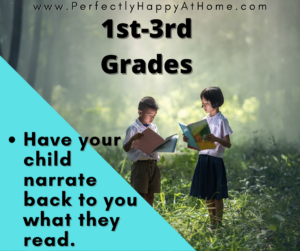 Let’s talk younger kids…Grades 1-3. Here is when it is absolutely appropriate for them to be fully engaged in both the words and the pictures. Pictures, and having enough of them, is very critical. I love some of the Dr. Seuss books, Fly Guy, and the Step Into Reading books with the numbered code to help you select the reading level that best fits your young reader. My daughter was particularly partial to the Tinkerbell Step Into Reading books, as well as Cork and Fuzz. My son loved Fly Guy, and some of the Superhero Step Into Reading books. Other must-have books on my list for these grades include The Wind in the Willows, Stuart Little, The Mouse and the Motorcycle, Winnie the Pooh, The Cricket in Times Square, and the Who Was series. When they read, ask them to tell you (narrate) about what they read. Ask pertinent questions such as “Who was the story about?” “What interesting things happened to him/her?” and “Do you know where the story is taking place?”. This will help ensure that your child is engaging and not just skimming.
Let’s talk younger kids…Grades 1-3. Here is when it is absolutely appropriate for them to be fully engaged in both the words and the pictures. Pictures, and having enough of them, is very critical. I love some of the Dr. Seuss books, Fly Guy, and the Step Into Reading books with the numbered code to help you select the reading level that best fits your young reader. My daughter was particularly partial to the Tinkerbell Step Into Reading books, as well as Cork and Fuzz. My son loved Fly Guy, and some of the Superhero Step Into Reading books. Other must-have books on my list for these grades include The Wind in the Willows, Stuart Little, The Mouse and the Motorcycle, Winnie the Pooh, The Cricket in Times Square, and the Who Was series. When they read, ask them to tell you (narrate) about what they read. Ask pertinent questions such as “Who was the story about?” “What interesting things happened to him/her?” and “Do you know where the story is taking place?”. This will help ensure that your child is engaging and not just skimming.
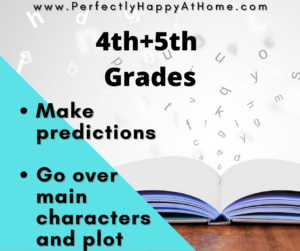 Grades 4+5 are next. These grades are fun to explore through, since reading skills are improving and new vocabulary skills are developing. Of course there are the favorites like Charlotte’s Web, Island of the Blue Dolphins, The Borrowers, Mystery on Maple Hill (check your local library for this one!), Mr. Popper’s Penguins, Bridge to Terabithia, 21 Balloons, the Baby Mouse series, the Diary of a Wimpy Kid series, the Dork Diaries series, and still the Who Was series. Continue to have discussions abut the book after your child has finished his/her reading assignment for the day. Have them make predictions about what they think will happen next and decide why they think that. Go over main character and plot facts to show you child that following these things as they progress through a novel is important.
Grades 4+5 are next. These grades are fun to explore through, since reading skills are improving and new vocabulary skills are developing. Of course there are the favorites like Charlotte’s Web, Island of the Blue Dolphins, The Borrowers, Mystery on Maple Hill (check your local library for this one!), Mr. Popper’s Penguins, Bridge to Terabithia, 21 Balloons, the Baby Mouse series, the Diary of a Wimpy Kid series, the Dork Diaries series, and still the Who Was series. Continue to have discussions abut the book after your child has finished his/her reading assignment for the day. Have them make predictions about what they think will happen next and decide why they think that. Go over main character and plot facts to show you child that following these things as they progress through a novel is important.
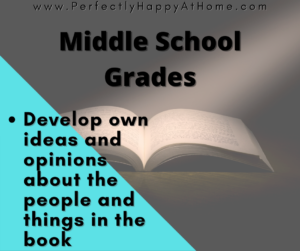 The Middle School Years are challenging, because as most parents have (or will) experienced, there is sometimes no pleasing them. But we never give up on engaging our youthful readers. We want them to move through these tough years with swiftness, but all the while gaining knowledge and confidence. High interest selections are still key here, and really playing to each particular child’s interests will truly pay off. Just because big brother or sister read it and loved it, doesn’t necessarily mean younger sibling will enjoy it. Some of my top shelf awesome reading selections for this age are The Witch of Blackbird Pond (another library selection!), King Arthur, Anne of Green Gables, The Secret Garden, the Nancy Drew series, The Hardy Boys series, the Babysitter’s Club series, The Egypt Game, The Castle in the Attic, The Phantom Tollbooth, The Bronze Bow, Hatchet, The Lion, the Witch and the Wardrobe, and Swiss Family Robinson. Have students report back on their opinions of what is going on in their novel. Being asked to state their own opinion at this age is challenging but usually welcomed as kids are learning to assert their independent thinking and are growing in their personal beliefs and convictions.
The Middle School Years are challenging, because as most parents have (or will) experienced, there is sometimes no pleasing them. But we never give up on engaging our youthful readers. We want them to move through these tough years with swiftness, but all the while gaining knowledge and confidence. High interest selections are still key here, and really playing to each particular child’s interests will truly pay off. Just because big brother or sister read it and loved it, doesn’t necessarily mean younger sibling will enjoy it. Some of my top shelf awesome reading selections for this age are The Witch of Blackbird Pond (another library selection!), King Arthur, Anne of Green Gables, The Secret Garden, the Nancy Drew series, The Hardy Boys series, the Babysitter’s Club series, The Egypt Game, The Castle in the Attic, The Phantom Tollbooth, The Bronze Bow, Hatchet, The Lion, the Witch and the Wardrobe, and Swiss Family Robinson. Have students report back on their opinions of what is going on in their novel. Being asked to state their own opinion at this age is challenging but usually welcomed as kids are learning to assert their independent thinking and are growing in their personal beliefs and convictions.
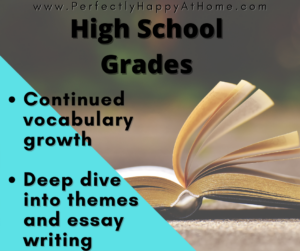 At last, we have reached High School. There are many, many directions to go in reading during these four years. This is the time to make sure that all classical genres have been covered at least once, but still mixing in some newly released literature as well. Along with the new stuff that comes out that my teens are interested in (this varies from teen to teen), I also weave in Shakespeare, Jane Eyre, Pride and Prejudice, Fahrenheit 451, Beowulf, The Great Gatsby, Of Mice and Men, Anne Frank, The Hobbit, The Hiding Place, Dr. Jekyll and Mr. Hyde, The Old Man and the Sea, and many others. These classics offer great opportunities to have deep discussions and also go hand-in-hand with essay writing. Discussion is still imperative here to assess continued vocabulary growth and understanding, as well as to encourage that deep dive into themes and gleaning of non-obvious information.
At last, we have reached High School. There are many, many directions to go in reading during these four years. This is the time to make sure that all classical genres have been covered at least once, but still mixing in some newly released literature as well. Along with the new stuff that comes out that my teens are interested in (this varies from teen to teen), I also weave in Shakespeare, Jane Eyre, Pride and Prejudice, Fahrenheit 451, Beowulf, The Great Gatsby, Of Mice and Men, Anne Frank, The Hobbit, The Hiding Place, Dr. Jekyll and Mr. Hyde, The Old Man and the Sea, and many others. These classics offer great opportunities to have deep discussions and also go hand-in-hand with essay writing. Discussion is still imperative here to assess continued vocabulary growth and understanding, as well as to encourage that deep dive into themes and gleaning of non-obvious information.
So after reading this all broken down into a few neat categories, I hope you are feeling a little bit better about moving forward in your kids’ reading journeys. I also hope that you will read (or re-read) some of these awesome books alongside your kids…it’s amazing what we can get from books as adults, even if we have already read them as kids/preteens/teens. Books are fun, learning is fun, and it should be joy-filled. Even the challenging titles. Even the ones that stretch you. Even the long books. Even the books without pictures. All of it. Here’s tp a beautiful week full of literary joy and new beginnings. I’ll be back to check in with you soon!
